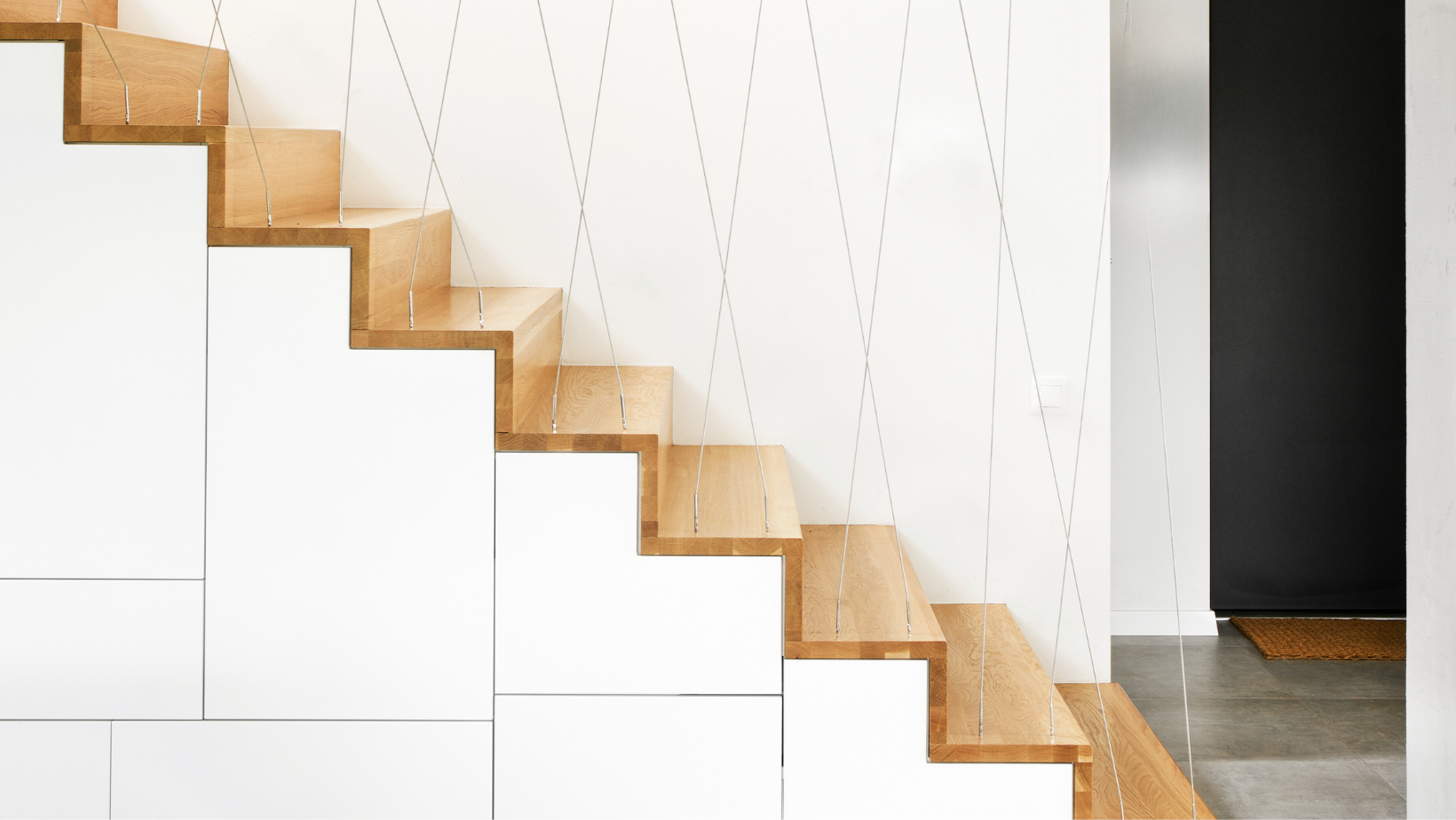A broken stair tread isn’t just an inconvenience—it’s a safety risk that needs your attention.
To answer how to replace a broken stair tread, start by removing the damaged tread, measuring and cutting a new one, then securely attaching it to ensure stability and safety.
In this guide, you’ll learn the exact steps, tools needed, and how to make your staircase both safer and more stylish.
Whether you’re fixing a single step or planning a full staircase refresh, this guide breaks it all down clearly.
You’ll also discover how adding carpet stair treads can enhance comfort and reduce slips—especially helpful for homes with kids or pets.
Let’s walk through every detail so you can confidently complete this DIY project.
Why Broken Stair Treads Need Your Attention Fast
It’s easy to ignore a damaged tread for a while—maybe it’s just squeaky, or it dips slightly in the middle.
But the truth is, every worn or broken stair is a risk.
Especially if you have little feet or furry paws scampering up and down every day.
Loose treads can:
-
Cause trips or falls
-
Lead to long-term damage in the stair structure
-
Ruin the look of your interior (especially if you're proud of your space)
-
Become more expensive to fix the longer you wait
If your staircase is creaky, cracked, or downright broken, now’s the time to make it right.
Start With the Right Type of Tread
First things first—what kind of stair tread are you working with?
The process will vary slightly depending on the material:
-
Wooden Stair Treads: Common in traditional homes. These are usually nailed or screwed down.
-
Carpet Stair Treads: Like the ones we create at Oak Valley, these sit on top of your base tread and can be removed or replaced easily.
-
Rubber or Composite Treads: Mostly found outdoors or in commercial buildings.
Each one requires a different touch, but the goal is the same: stability, safety, and a beautiful finish.
Removing the Damaged Tread Safely
Before you install anything new, you’ll need to get the damaged tread out cleanly.
Removing it the right way protects the rest of your staircase.
Gather What You’ll Need:
Basic tools include a hammer, crowbar, drill or screwdriver, safety goggles, tape measure, and vacuum.
Step 1: Clear the Way
Take a moment to clear off the staircase.
You want a safe, open space to work.
Step 2: Remove the Tread
Use the crowbar or hammer to carefully lift the broken tread, loosening any nails or screws.
Be gentle so you don’t damage the stringers or nearby treads.
Step 3: Clean Up
Vacuum any debris, leftover glue, or splinters.
A clean surface helps your new tread fit snugly and securely.
Replacing the Tread
With the old tread removed, it’s time to fit the new one.
Accuracy and secure installation are key for safety and a polished finish.
Step 1: Measure Twice, Cut Once
Use your old tread (if it’s still intact) as a template.
If not, measure the depth and width of the stair and cut your new tread to size.
Step 2: Choose Your Material
We recommend a durable, smooth wood like oak or maple—or, even better, a solid base paired with soft carpet stair treads for comfort and style.
Step 3: Secure the Tread
Using construction-grade adhesive or wood screws, firmly attach the new tread.
Make sure it’s level, flush with the riser, and doesn’t shift under pressure.
Adding Comfort With Carpet Stair Treads
Once your tread is secure, you have the perfect opportunity to upgrade the experience.
Carpet stair treads are one of the best ways to enhance both comfort and safety.
Here’s why they’re worth the extra step:
-
Safety: Reduce slips and falls, especially for kids or pets.
-
Sound Dampening: Muffles the clunky sound of hard shoes on wood.
-
Style: Adds texture, color, and personality to your staircase.
-
DIY-Friendly: Our treads at Oak Valley Designs are made to install with ease—no permanent damage, no stress.
If you’re replacing a single tread or doing a full staircase overhaul, don’t skip the opportunity to make your stairs not only safer—but softer and more inviting too.
Replacing One Tread vs. the Whole Staircase
You might be wondering—can I just replace the one broken tread?
Yes.
In fact, replacing just the damaged treads is often the most efficient and budget-friendly choice.
But before you install a new one, check the surrounding risers and stringers.
If they’re warped, wobbly, or damaged, you might need to expand your project.
This brings us to something many homeowners consider.
What About the Whole Staircase?
Some folks notice that once they’ve replaced one tread, the others start looking pretty tired.
That’s when they start asking how to replace steps and risers—and whether it’s worth doing all at once.
Replacing steps and risers means:
-
Removing all existing treads and risers
-
Measuring and cutting new ones
-
Installing risers first to provide a sturdy back wall
-
Then securing each new tread to rest firmly on top
This option is great for older homes where the whole staircase might have seen better days.
It gives you a clean slate for a modern, cohesive upgrade—and it's the ideal time to install a full set of carpet stair treads for added warmth.
Just remember: start from the top and work your way down.
It keeps things safer during the replacement process.
Outdoor Fix? Here’s How to Replace Deck Stair Treads
If you’ve got stairs leading up to a porch, patio, or backyard, those treads take a beating—sun, rain, snow, you name it.
Over time, wood can warp or rot, especially if it wasn’t sealed properly the first time.
Here’s what to do:
Step 1: Remove the Old Tread Use your crowbar or drill to pull up the damaged piece. Deck treads are often screwed in, not nailed.
Step 2: Choose Your Material Opt for pressure-treated wood or composite decking. These materials are weather-resistant and longer-lasting.
Step 3: Cut and Fit the New Tread Measure carefully and cut your new deck tread to match the exact length of the old one.
Step 4: Secure With Exterior Screws Use galvanized or coated screws designed for outdoor use. This prevents rust and holds better over time.
Step 5: Seal for Protection Finish with a quality outdoor sealant or stain to protect your new tread from the elements.
Whether you’re learning how to replace deck stair treads or just refreshing a single indoor step, it’s all about making your home feel solid, safe, and well-loved.
Bonus Tips for a Cleaner, Safer Installation
-
Always wear safety goggles when removing nails or cutting wood.
-
Test-fit your new treads before attaching to ensure flush alignment.
-
Use a level to double-check that each tread sits evenly.
-
Sand edges slightly to prevent sharp corners.
-
If you're using carpet stair treads, allow base treads to fully dry or set before applying adhesive.
Thinking About a Bigger Staircase Project?
You don’t need to be a pro contractor to transform your staircase.
From repairing a single step to completely revamping your stairs, every project is an opportunity to enhance your home’s safety and design.
Even better, you can personalize your staircase with:
-
Custom-fit carpet treads
-
Landing rugs that complement your hallway
-
Matching hallway runners for a seamless, stylish transition
At Oak Valley Designs, we’re not just here to help you fix what’s broken.
We’re here to help you fall in love with your staircase again... Because here at Oak Valley Designs, your home is our heart.
Stepping It Up
If you've been putting off stair repairs, now’s the time to act.
Knowing how to replace a broken stair tread empowers you to take safety, style, and comfort into your own hands—literally.
From interior staircases to outdoor decks, every step you fix brings confidence back into your home.
And with the right materials—like high-quality wood and soft, safe carpet treads—you’ll do more than repair.
You'll elevate.
We’re proud to help you every step of the way, from custom swatches to easy returns.
Because here at Oak Valley Designs, your home is our heart.
-
Website: https://oakvalleydesigns.com/
-
Phone: 706.331.0315
-
Email: info@oakvalleydesigns.com
-
Address: 30 River Ct SW Bldg E Cartersville, Ga 30120




